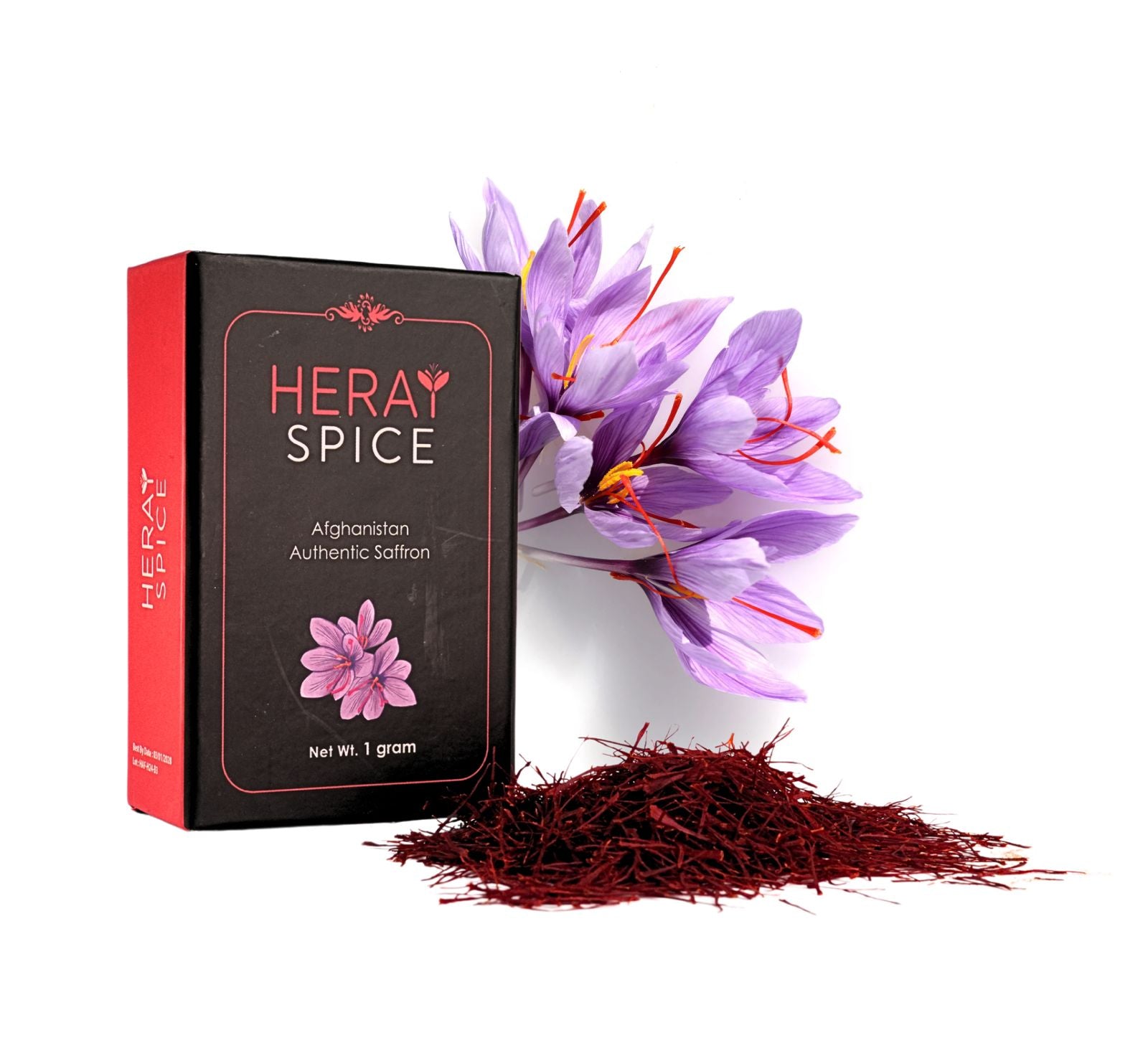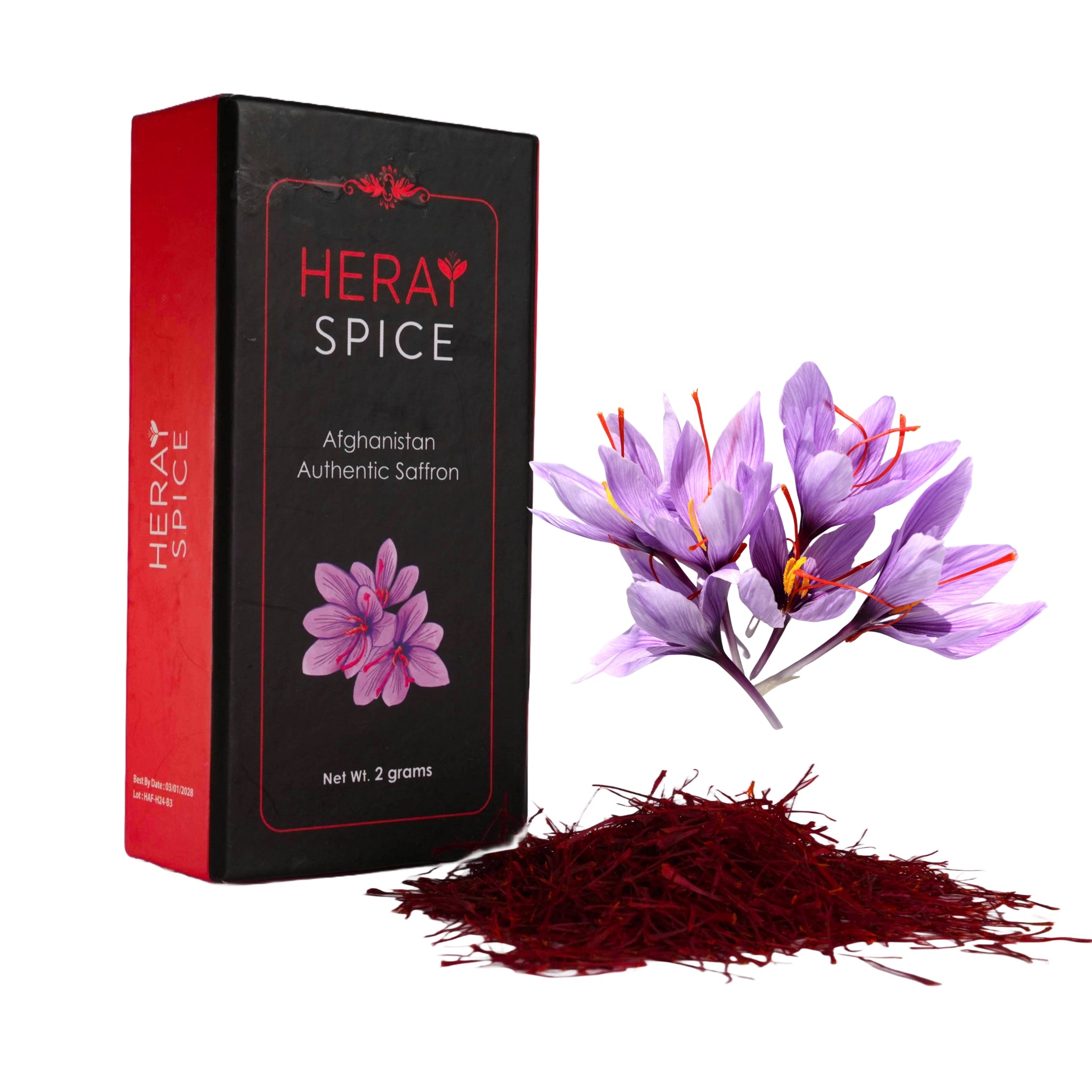
Saffron 102:
How is saffron harvested?
Recommendation: Read Saffron 101 First. Where does saffron threads come from?


How is saffron harvested?
Every autumn in Herat, Afghanistan, something truly special happens. As the nights grow cooler and the days shorter, vibrant purple flowers begin to bloom across the saffron fields. This is the saffron crocus—delicate, fleeting, and home to the world’s most precious spice.
The Labor Behind Every Thread
Saffron harvesting is one of the most labor-intensive agricultural processes in the world. It begins with planting saffron corms in the summer. By mid to late autumn, the saffron crocus (Crocus sativus) blooms with delicate purple flowers, signaling the start of harvest season.
The harvest must be done by hand—and with great care. Flowers are picked before or just after sunrise, when they are still fresh and not damaged by sunlight or heat. Each crocus flower contains only three tiny red stigmas, which are the actual saffron threads.

How are Saffron threads harvested?
These stigmas must be individually plucked by hand, a process requiring incredible patience and precision.
Due to the delicate nature of the flower and stigma, mechanical harvesting is not an option—machines can easily crush or contaminate the precious threads. After harvesting, our farmers gently separate the three red stigmas from each flower by hand. These become the saffron threads you see in our jars. The picture below.

Why saffron Harvesting Matters
Saffron harvesting matters because it lies at the very heart of what makes this spice the most precious in the world — from its remarkable value and delicate nature to its deep cultural roots and economic importance.
Each saffron thread is hand-plucked from the Crocus sativus flower, which blooms for just a few weeks each fall and produces only three tiny red stigmas per flower. It takes over 75,000 flowers to produce just one pound of saffron, and harvesting must be done early in the morning to preserve the vibrant color, aroma, and medicinal properties — crocin, picrocrocin, and safranal — that give saffron its legendary potency.
This labor-intensive process demands skill, care, and perfect timing; any delay can reduce the quality dramatically. But beyond the technical challenge, saffron harvesting provides seasonal income for thousands of small farmers, especially women, in regions like Herat, Afghanistan, where it offers a sustainable and dignified alternative to conflict-linked crops.
For many of these communities, saffron is more than a crop — it’s a source of hope, stability, and empowerment. The harvest season itself is steeped in tradition, with families working together in a shared rhythm that has been passed down through generations. When you choose ethically harvested saffron, you’re not just enjoying an exquisite spice — you’re supporting heritage farming, rural livelihoods, and a story of resilience written in every crimson thread.
At Heray Spice, our saffron isn’t just a product—it’s a reflection of our values. We partner directly with Afghan farmers, many of whom are women, and we pay above-market rates to ensure they can sustain their families and communities. This work helps preserve Afghanistan’s agricultural heritage while creating ethical, transparent supply chains in a region that needs hope and opportunity.

From Our Hands to Your Kitchen
After the harvest, the saffron is dried, tested, and packed with great attention to quality and safety. Every jar tells a story—from the cool autumn mornings in Herat to the final sprinkle in your tea or rice.
So, as saffron season returns, we invite you to pause and consider what’s behind those golden threads: early mornings, skilled hands, and a deep connection between people and land.

Why Are Saffron Threads So Expensive?
Saffron is expensive due to:
• Labor-intensive harvesting: Each flower must be hand-picked and hand-processed.
• Low yield: It takes 75,000+ flowers to produce just one pound of saffron.
• Delicate handling: From harvest to drying and packing, it requires great care to preserve quality.
• Limited growing regions: It only grows in specific climates like Iran, Afghanistan, India, and parts of Europe.
Are Saffron Threads Worth It?
Yes. Even a small jar can cost more than most other spices. But because you only need a pinch, even a 1-gram jar can be used in 15 to 20 recipes.

What Are the Grades of Saffron Threads?
Saffron is graded based on color, aroma, and content of the red stigmas. The main grades are:
• Super Negin: Long, all-red stigmas with intense aroma and color. Premium grade.
• Negin (Sargol): All-red threads, slightly shorter than Super Negin. Very high quality.
• Pushal: Threads with some yellow style parts attached. More volume but lower potency.
• Dasteh (Bunch): Includes the full stigma (red and yellow parts) often tied in bunches. Traditional style.
• Konj (White): The pale yellow or white root of the stigma—mild in flavor and often considered lower in quality.

How to store Saffron?
• Store in a cool, dark, and dry place (like a pantry or wine cellar)
• Keep it in an airtight glass container, away from moisture and light
• For extra protection, wrap the jar in foil to block sunlight
What are the usage tips for saffron?
• Less is more—a pinch is often enough
• Always soak saffron in warm (not boiling) water, milk, or broth for 5–20 minutes to unlock its full aroma, flavor, and color
• Add both the saffron and the soaking liquid to your dish

What are the Saffron Health and Wellness benefits?
• Saffron to boost mood: Clinical studies show saffron may help ease symptoms of depression and anxiety
• Saffron to help sleep: Used traditionally to calm the mind and promote restful sleep
• Saffron to induce period: Some cultures use saffron as a gentle uterine stimulant (consult your doctor)
• Saffron to treat anxiety: Natural compounds in saffron (like crocin and safranal) may support emotional well-being

What are some cookign tips for saffron?
• Saffron to cook with: Ideal for rice dishes (like paella, biryani, or risotto), soups, stews, breads, desserts, and teas
• Saffron to rice ratio: Use about 15–20 threads (or ¼ tsp of soaked saffron liquid) for 1 cup of rice
• Saffron to turmeric conversion: These are not interchangeable. Turmeric is more bitter and earthy, while saffron is floral, delicate, and luxurious





